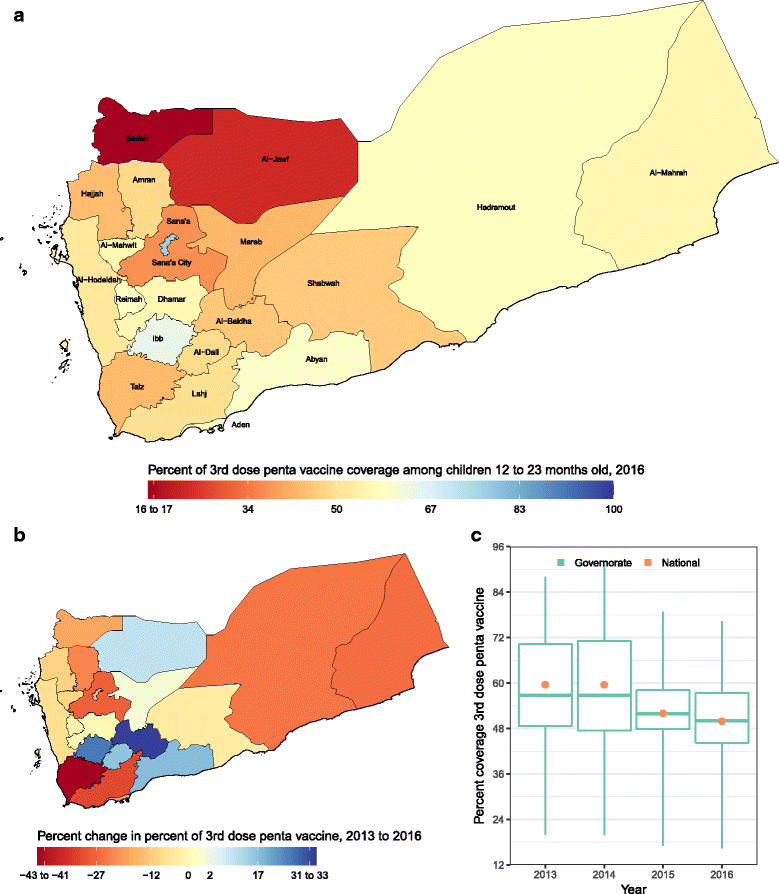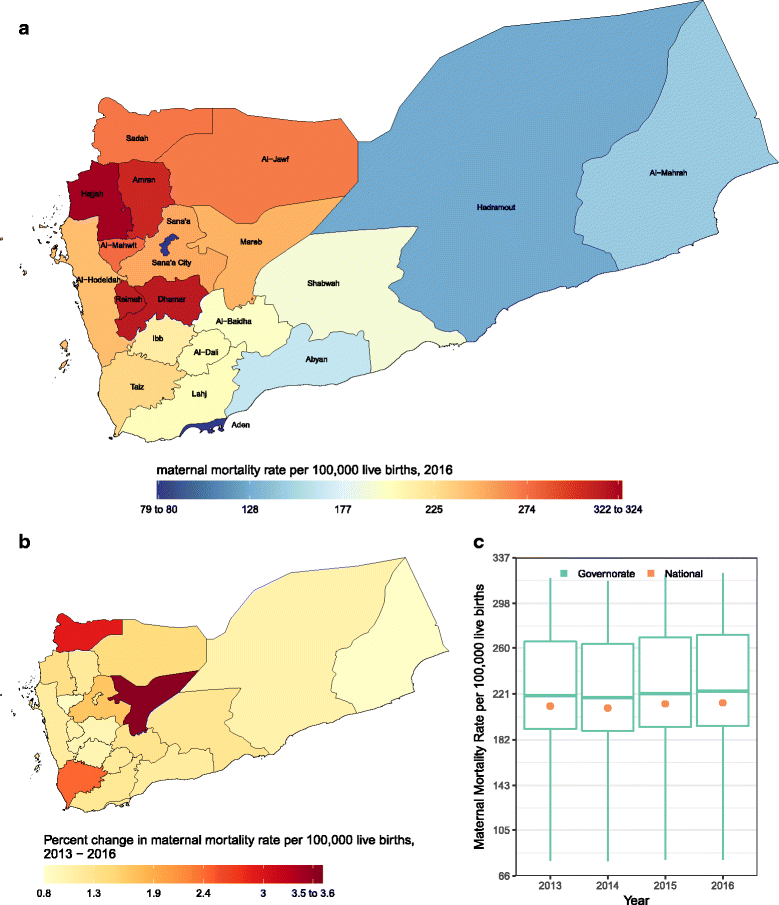Health in Yemen: losing ground in war time
- PMID: 29695301
- PMCID: PMC5918919
- DOI: 10.1186/s12992-018-0354-9
Health in Yemen: losing ground in war time
Abstract
Background: The effect of the ongoing war in Yemen on maternal and child health (MCH) has not been comprehensively assessed. Providing a situational analysis at the governorate level is critical to assist in planning a response and allocating resources.
Methods: We used multiple national- and governorate-level data sources to provide estimates of 12 relevant MCH indicators in 2016 around child vaccination, and child and maternal nutritional status, and the change in these estimates for the period 2013-2016 based on shock variables including change in gross domestic product, burden of airstrikes per 1000 population, change in access to untreated water sources and unimproved toilets, and change in wheat flour prices. We also used findings from the Global Burden of Disease 2016 study.
Results: Vaccine coverage decreased for all antigens between 2013 and 2016 among children 12-23 months. The largest decrease, 36·4% for first-dose measles vaccine, was in Aden. Among children under the age of five, incidence of diarrhea was at 7·0 (5·5-8·9) episodes per person-year. The prevalence of moderate and severe child anemia ranged from 50·9% (24·9-73·1) in Sana'a City to 97·8% (94·1-99·2) in Shabwah in 2016. Prevalence of underweight among women of reproductive age ranged from 15·3% (8·1-24·6) in Sana'a city to 32·1% (24·1-39·7) in Hajjah, with a national average of 24·6% (18·7-31·5).
Conclusions: The war and siege on Yemen has had a devastating impact on the health of women and children. Urgent efforts to secure food, essential medicines, antibiotics, deworming medicine, and hygiene kits, and cold chains for immunization are needed. Yemen is in dire need of clean water and proper sanitation to reduce the spread of disease, especially diarrhea.
Keywords: Conflict; Malnutrition; Maternal and child health; Mortality; Vaccine coverage; War.
Conflict of interest statement
Ethics approval and consent to participate
Not applicable.
Consent for publication
Not applicable.
Competing interests
The authors declare that they have no competing interest.
Publisher’s Note
Springer Nature remains neutral with regard to jurisdictional claims in published maps and institutional affiliations.
Figures





Comment in
-
The use of stunting as a nutrition indicator in Yemen civil war.Global Health. 2019 Nov 8;15(1):63. doi: 10.1186/s12992-019-0502-x. Global Health. 2019. PMID: 31703712 Free PMC article. No abstract available.
References
-
- United Nations Development Programme. Human development report 2015. Work for human development. New York: United Nations; 2015.
-
- Al-Batuly A, Al-Hawri M, Cicowiez M, Lofgren H, Pournik M. Assessing development strategies to achieve the MDGs in the Republic of Yemen. United Nations Department for Social and Economic Affairs; 2011. (Realizing the Millennium Development Goals through socially inclusive macroeconomic policies). Available from: http://www.un.org/en/development/desa/policy/capacity/output_studies/roa...
-
- Terrill AW, Strategic Studies Institute. The conflicts in Yemen and US national security. Carlisle: Strategic Studies Institute; 2011.
-
- Boley J, Kent E, Grassie S, Romeih S. A conflict overlooked: Yemen in crisis. 2017.
Publication types
MeSH terms
Grants and funding
LinkOut - more resources
Full Text Sources
Other Literature Sources
Medical

